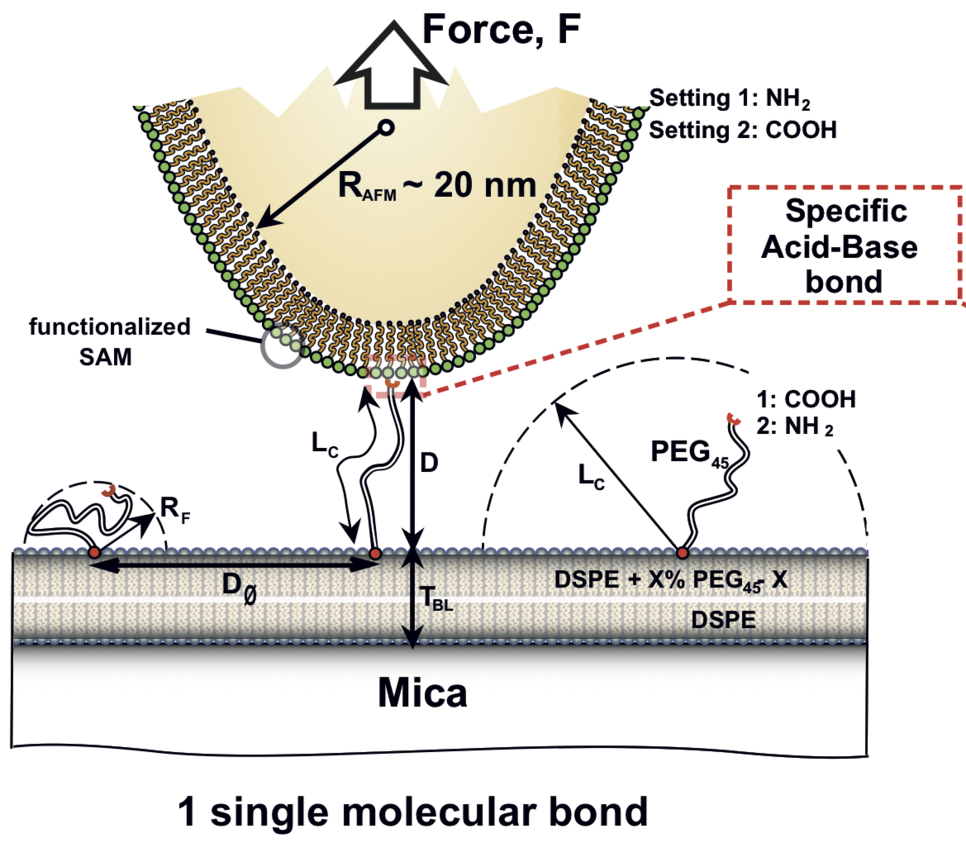1. Scaling from single molecule to macroscopic adhesion at polymer/metal interfaces
Understanding the evolution of macroscopic adhesion based on fundamental molecular interactions is crucial to designing strong and smart polymer/metal interfaces that play an important role in many industrial and biomedical applications. Here we show how macroscopic adhesion can be predicted on the basis of single molecular interactions. In particular, we carry out dynamic single molecule-force spectroscopy (SM-AFM) in the framework of Bell-Evans' theory to gain information about the energy barrier between the bound and unbound states of an amine/gold junction. Furthermore, we use Jarzynski's equality to obtain the equilibrium ground-state energy difference of the amine/gold bond from these nonequilibrium force measurements. In addition, we perform surface forces apparatus (SFA) experiments to measure macroscopic adhesion forces at contacts where approximately 10(7) amine/gold bonds are formed simultaneously. The SFA approach provides an amine/gold interaction energy (normalized by the number of interacting molecules) of (36 ± 1)kBT, which is in excellent agreement with the interaction free energy of (35 ± 3)kBT calculated using Jarzynski's equality and single-molecule AFM experiments. Our results validate Jarzynski's equality for the field of polymer/metal interactions by measuring both sides of the equation. Furthermore, the comparison of SFA and AFM shows how macroscopic interaction energies can be predicted on the basis of single molecular interactions, providing a new strategy to potentially predict adhesive properties of novel glues or coatings as well as bio- and wet adhesion.



